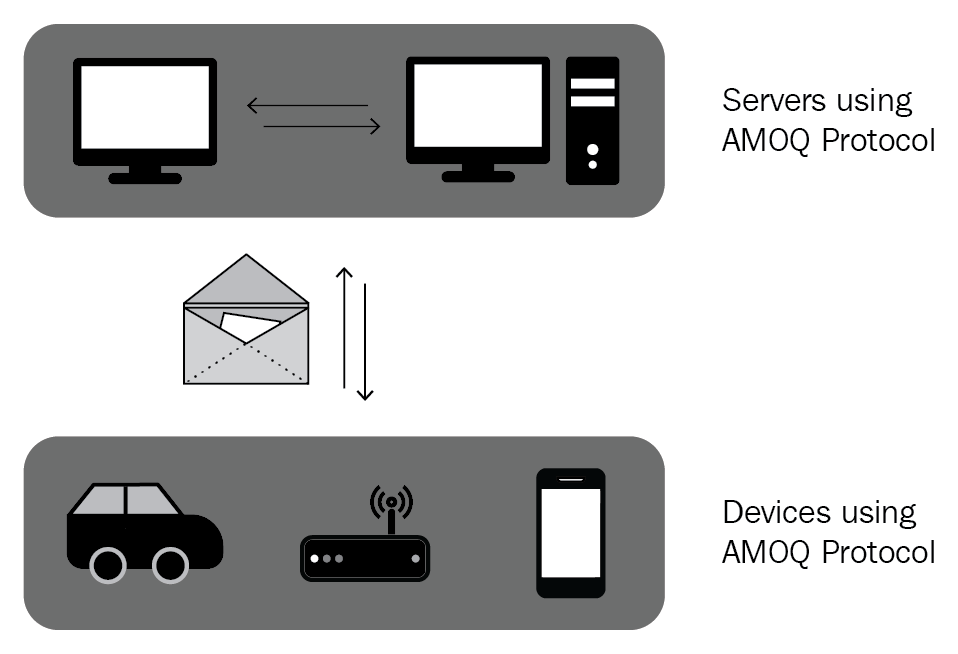IoT devices need to communicate. There are various connectivity types. Connectivity could exist between devices in a region, between devices and a centralized gateway, between devices and an IoT platform, and more.
In all such cases, IoT devices need connectivity capability. This capability could be in the form of internet connectivity, Bluetooth, infrared, or any other near-device communication.
Some devices might not have the capability to connect to the internet. In those cases, they can connect through other means to a gateway, which in turn has connectivity to the internet.
IoT devices use protocols to send messages. The major protocols among these are the Advanced Message Queuing Protocol (AMQP) and the Message Queue Telemetry Transport (MQTT) protocol.
Device data should be sent to an IT infrastructure. The MQTT protocol is a device-to-server protocol that devices can use to send telemetry data and other information to servers. Once the server receives a message through the MQTT protocol, it needs to transport the message to other servers using a reliable technology based on messages and queues. AMQP is the preferred protocol for moving messages between servers in the IT infrastructure in a reliable and predictable manner:

Servers receiving initial messages from IoT devices should send those messages to other servers for whatever processing is necessary, such as saving to logs, evaluation, analytics, and presentation.
Some devices do not have the capability to connect to the internet or do not support protocols understood by an IT infrastructure. To enable these devices to work with an IoT platform and the cloud, intermediate gateways can be used. Gateways help in on-boarding devices whose connectivity and networking capability is slow and not consistent; such devices may use protocols that are not standard, or their capabilities may be limited in terms of resources and power.
In such circumstances, when devices need additional infrastructure to connect to backend services, client gateways can be deployed. These gateways receive messages from near devices and forward and push them to IT infrastructure and the IoT platform for further consumption. These gateways are capable of protocol translation if required.